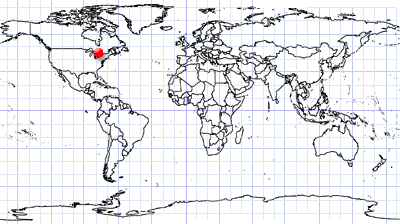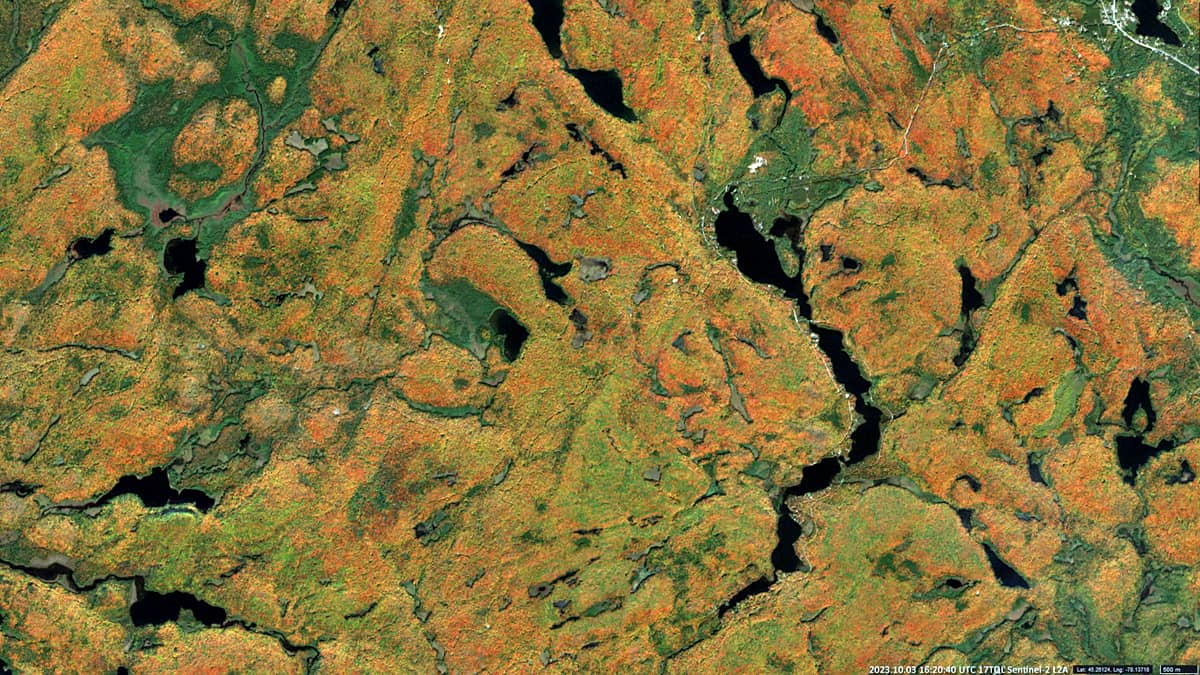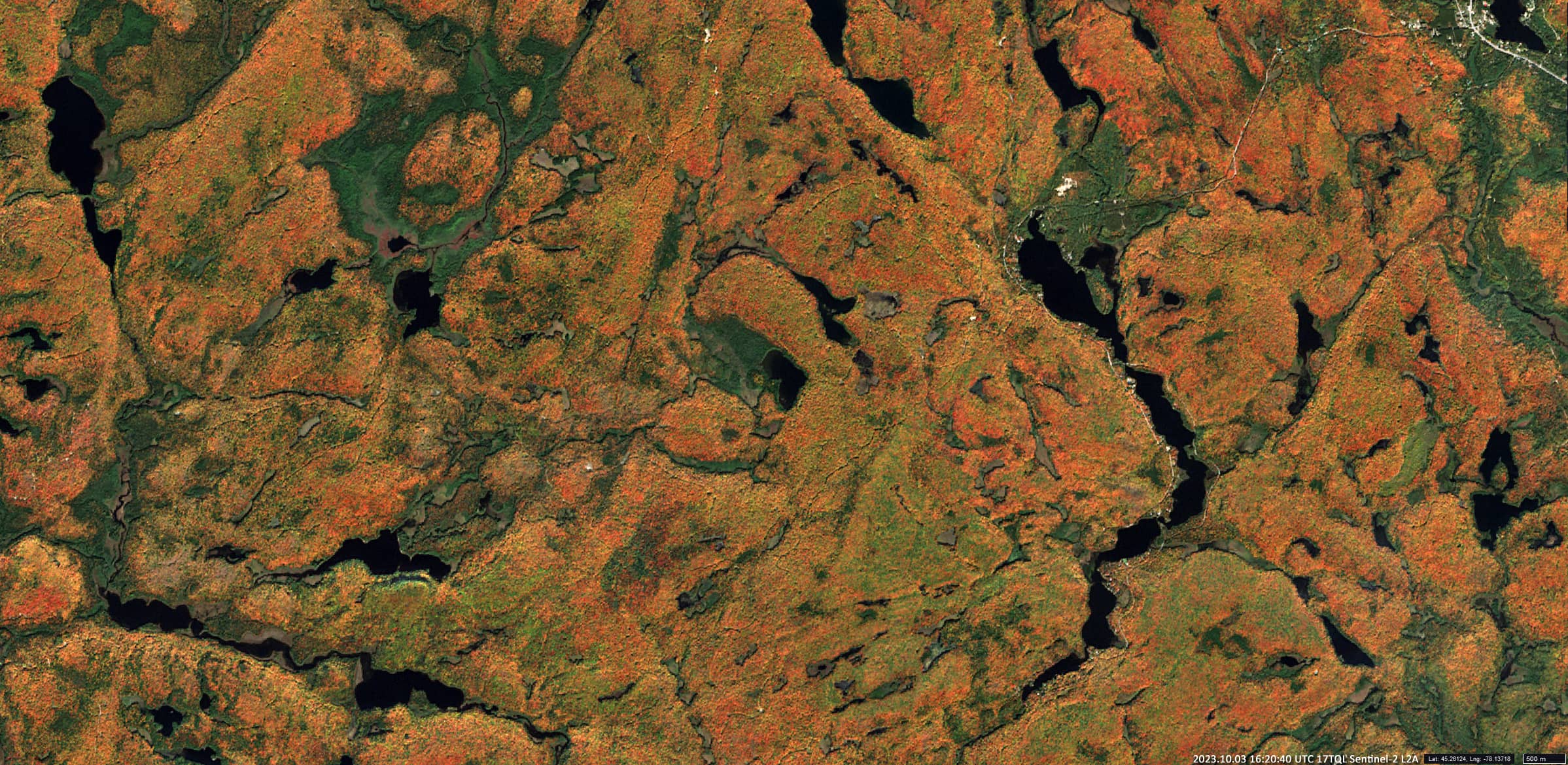
Algonquin Park
Eastern Ontario | Canada
Date of acquisition: October 3rd, 2023 | 16:20:40 UTC
Sensor: Sentinel-2 L2A
Coordinates: ca. 45.26139°N, 78.13583°W
We present here a short animation that shows how the forest changes its colour appearance when viewed from above, from a satellite.
The “object of observation” is a 37×17 km forest area in the south of the Algonquin Provincial Park in the province of Ontario, Canada. The center of the site is a small (0.17 km2),heart-shaped lake called Lower Perieau. The small village of Lake St. Peter lies to the east (upperright). The area is about 200 km northeast of the city of Toronto, which is located on the western side of Lake Ontario.
Algonquin Park has a humid continental climate with long, cold, snowy winters and warm summers. Wintertemperatures often drop below -20°C (-4°F), while summer temperatures can reach 30°C (86°F) and sometimes higher.
The region is home to 34 indigenous tree species. 9 Species are classified as “evergreen”. The only exception is the Tamarack that changes to golden yellow color before shedding its needles in autumn. The other 24 species are deciduous trees. They change color at different times, depending upon the species and other conditions. Old sugar maples, red maples, hemlocks, and yellow birches grow in the park. Other conifers (e.g. Weymouth pine) and deciduous trees (e.g. poplar and birch) are found in smaller numbers.
Algonquin Park’s relatively high elevation (up to almost 600 m above sea level), thin soils and cooler temperatures result in a shorter growing season for trees.
In winter, the ground is covered with a thick layer of snow. However, from a satellite the forest does not look white, because the lower layer of the forest is shielded by the bare branches of deciduous plants and spreading conifers. All this “shields” the pure white color reflected from the snow, turning it into grey or grey-green colors in various shades. Open areas, such as fields or lakes look really white when covered with snow.
The presented animation of changing forest colours over a year gives an overview of the selected area in two domains: in true colour (RGB[432]) and false colour (RGB [843]), where vegetation (in red) is very clearly visible.




